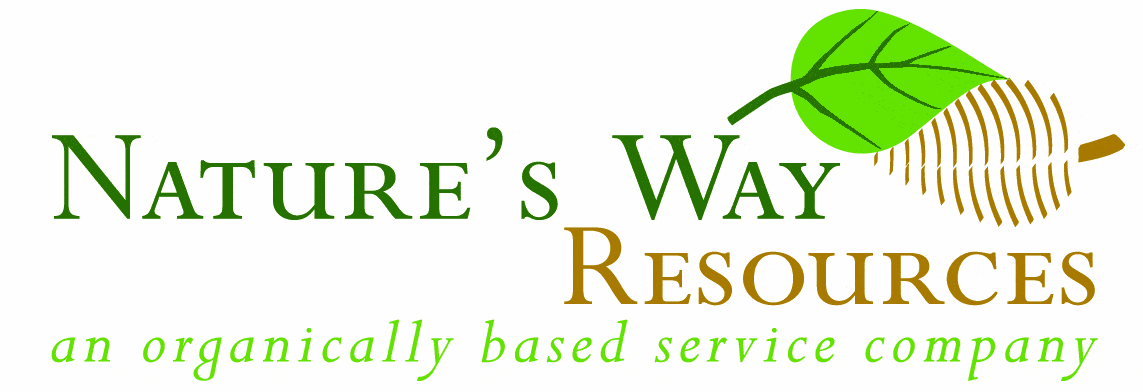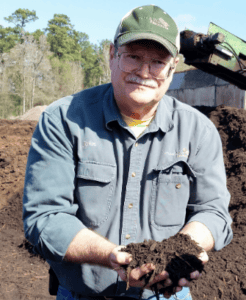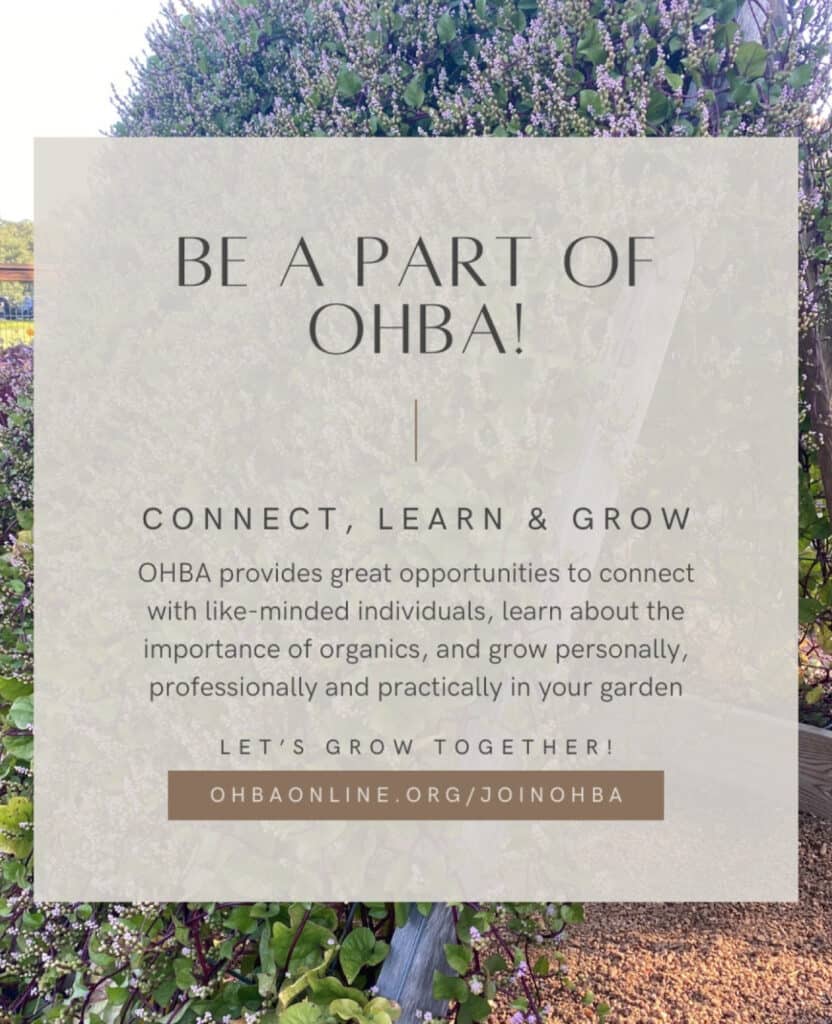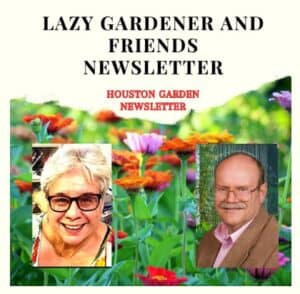 Nature’s Way Resources is proud to produce & email you this free weekly newsletter. We have no ads, but sponsors do graciously help support this project as a public service. Please note their names below & show your gratitude for this free service by patronizing their businesses! To become a sponsor, call (936) 273-1200
Nature’s Way Resources is proud to produce & email you this free weekly newsletter. We have no ads, but sponsors do graciously help support this project as a public service. Please note their names below & show your gratitude for this free service by patronizing their businesses! To become a sponsor, call (936) 273-1200
Nature’s Way Resources owner John Ferguson, “The Lazy Gardener” Brenda Beust Smith and Pablo Hernandez welcome your feedback and are so grateful to the many horticulturists who contribute their expertise
Click here to join our email list
CLICK HERE for PDFs OF PAST LG&F NEWSLETTERS

Didn’t realize goldenrod has so many fans — wow! Looking ahead to more color…
BY BRENDA BEUST SMITH
Let’s face it. Our tree fall color is few and far between in public places compared to other areas. And it comes pretty late compared to the rest of the nation. But it seems a lot more folks not only notice and appreciate our goldenrod, they’re planting it in their landscapes.
Thanks for the reports. I think we better thank Native Plant Society of Texas chapter folks. They opened all our eyes to beauty around us. Good example: Dr. Bob Randall’s home landscape plantings above.
Goldenrod is a native wildflower in almost every state in the nation. But not all are the same variety. Texas alone is said to be home to 20+ goldenrod varieties. Best bets: buy from a reliable nursery that carries natives or an NPSOT chapter sale. The internet is full of tips on “how to keep goldenrod from becoming invasive.” For us: npsot.org/posts/native-plant/solidago-altissima/
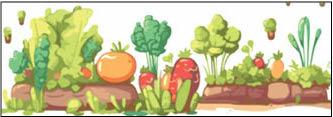
IS ALL COPACETIC IN YOUR VEGGIE PATCH?
Some plants are “alleopathic,” i.e., contain herbicides that affect only certain other plants and release toxins that suppress specific plants in its vicinity.
Asparagus is said to not like growing near mints & onions. Beets may not do well with pole beans or mustard greens. Tomatoes near potatoes? Many say, “No, no!” Some even recommend allopathic to discourage lawn garden weeds!
Some folks say:
- Mint and onions should not be close to where asparagus is growing.
- Anise and dill should not be planted next to carrots cucumber, pumpkin, radish, sunflower, or squash.
- Tomatoes should not be planted close to potatoes.
- No cabbage family member should be planted near strawberries.
- Cabbage, cauliflower, corn, dill, and potatoes should not be planted near tomatoes.
Others are even meaner. Chinese tallows are said to literally transform soil around them so only their tallow seeds germinate, not seed of other plants or grasses. And research on-ongoing to create alleopathic lawn grasses that repel lawn-loving weeds.
Two fascinating resources:
- Harris County Master Gardeners Alleopathic flyer 020-09-hcmga-urban-dirt(5).pdf
- Texas A&M’s pdf: agrilifeorganic.org/2024/01/09/allelopathy-what-is-it-what-has-it-and-how-do-we-use-it/)
 LOOKING FOR WINTER COLOR? THINK CAMELLIAS! The Friends of Mercer Botanic Garden’s annual camellia sale plants will be available this year at Mercer’s Nov. 2 Autumn Plant Sale. In our Spotlight Article below, KITT BURNSIDES shares a true advocate’s perspective on these ready-to-bloom winter delights. The SAT., NOV. 2: AUTUMN PLANT SALE, 8am-3pm. Mercer Botanic Gardens, 22306 Aldine Westfield Rd, Humble. Free. Friends of Mercer, Varieties pictured below will be available at sale. friendsofmercer.com
LOOKING FOR WINTER COLOR? THINK CAMELLIAS! The Friends of Mercer Botanic Garden’s annual camellia sale plants will be available this year at Mercer’s Nov. 2 Autumn Plant Sale. In our Spotlight Article below, KITT BURNSIDES shares a true advocate’s perspective on these ready-to-bloom winter delights. The SAT., NOV. 2: AUTUMN PLANT SALE, 8am-3pm. Mercer Botanic Gardens, 22306 Aldine Westfield Rd, Humble. Free. Friends of Mercer, Varieties pictured below will be available at sale. friendsofmercer.com
PS. Yuletide amellias are almost always in bloom on Christmas day
— hence are popular as potted plants sited next to front doors!
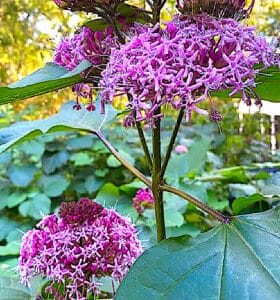 INGRID HAMILTON is among several readers bemoaning a noticeable increase in invasiveness of butterfly-attracting-Mexican hydrangeas (Clerodendrum bungei, Rose Glorybower). Not surprising. They are on the Texas Invasive Plant List. Good resource to check periodically, especially if a plant seems overly-enthusiastic. Might be time for a rethink. Ingrid Hamilton photo
INGRID HAMILTON is among several readers bemoaning a noticeable increase in invasiveness of butterfly-attracting-Mexican hydrangeas (Clerodendrum bungei, Rose Glorybower). Not surprising. They are on the Texas Invasive Plant List. Good resource to check periodically, especially if a plant seems overly-enthusiastic. Might be time for a rethink. Ingrid Hamilton photo
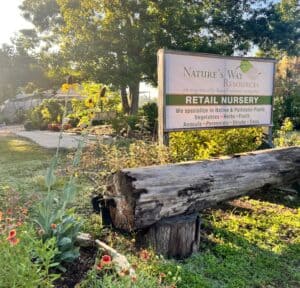 ATTN. GARDEN/PLANT GROUPS — In wake of Hurricane Beryl, Nature’s Way Resources offers free guided tours of NWR’s extensive nursery/soil/mulch facilities for garden clubs, plant societies and other plant-oriented, organized groups. As usual, NWR’s now-expanded meeting site is free to above groups. Reservations a must for both.
ATTN. GARDEN/PLANT GROUPS — In wake of Hurricane Beryl, Nature’s Way Resources offers free guided tours of NWR’s extensive nursery/soil/mulch facilities for garden clubs, plant societies and other plant-oriented, organized groups. As usual, NWR’s now-expanded meeting site is free to above groups. Reservations a must for both.
“LAZY GARDENER’S GUIDE” (PDF format) is emaild free. Request: lazygardenbrenda@gmail.com
Brenda Beust Smith’s column is based on her 40+ years as the Houston Chronicle’s “Lazy Gardener” column — lazygardenerbrenda@gmail.com Brenda’s column focuses ONLY on the Greater Houston Area
Spotlighting…
Mercer Botanic Garden

L to r above: Camellia japonicas ‘Sea Foam’; C. japonica ‘Sea Foam’; C. japonica ‘Junior Miss’; Camellia sasanqua ‘October Magic Ruby’ and C. sasanqua ‘Hot Flash’. Mercer Botanic Garden photos
CAMELLIAS: QUEENS OF THE WINTER GARDEN
By KITT BURNSIDES
FRIENDS OF MERCER BOTANIC GARDENS
Board Member & Tree & Shrub Grow Lead
Camellia flowers represent a spirit of depth, self-reflection and inner strength – qualities that are highly esteemed in Japanese culture. They also symbolize love, loyalty and humility – perfect to express gratitude towards family and friends.
Camellias, often referred to as “Queens of the Winter Garden,” are treasured for their beauty and resilience. These enchanting shrubs provide a unique touch to any garden, especially in cooler months. Here’s what makes camellias truly special and how to cultivate them successfully in the Houston area.
Why Camellias Stand Out
- Long Bloom Season: Camellias are a rare delight in fall and winter gardens, blooming when many plants are dormant. Their flowers can persist for weeks or even months, with some varieties blooming in waves, ensuring continuous bursts of color.
- Pollinator-Friendly: Despite the colder temperatures, camellias attract hummingbirds, honeybees, and other pollinators, providing a crucial food source when other plants may not be available.
- ·Winter Color: While other plants have shed their leaves or faded away, camellias bring vibrancy to the landscape, offering lush, glossy foliage and a variety of flower colors.
- Support for Wildlife: The sturdy, evergreen leaves provide shelter, while the flowers offer a year-round food source, making camellias a sanctuary for wildlife, including butterflies.
- ·Versatility in the Landscape: Camellias are adaptable and can be grown in containers, used for privacy screens, or even trained into unique shapes, making them suitable for a range of garden designs.
- Longevity: These long-lived plants are often passed down through generations, with some camellias thriving for up to 100 years.
- Symbol of Love and Longevity: Known for their symbolism, camellias represent love, beauty, and endurance. Their fragrant blooms add a sensory dimension to the garden, enhancing any outdoor space.
Camellias thrive in the Houston climate, but they do require specific conditions to reach their full potential. Understanding the two main types—sasanquas and japonicas—is key to successful cultivation.
Sasanquas are smaller camellias that can handle more sunlight, making them suitable for gardens that receive morning sun and afternoon shade. They are known for their delicate, smaller blooms and can tolerate light pruning, allowing for more versatile use in the landscape.
Japonicas, on the other hand, feature larger flowers and prefer shadier spots. They are ideal for areas with filtered light, such as under large oak trees or on the north side of a structure. Japonicas are particularly suited to the Houston area due to their love for humidity and their tolerance for Houston’s clay-based soils, provided the soil is amended for good drainage.
Planting and Care Tips
- Site Selection: Choose a location with partial shade to dappled sunlight. Avoid direct afternoon sun, which can scorch the leaves.
- Soil Preparation: Camellias prefer slightly acidic soil with good drainage. Amending the soil with compost or peat moss will help create the right conditions.
- Watering: While camellias enjoy moist soil, they don’t like to be waterlogged. Water deeply but allow the soil to dry out slightly between watering.
- Fertilization: Use a fertilizer formulated for acid-loving plants, such as those used for azaleas, in early spring and mid-summer.
- Pruning: Light pruning can be done after blooming to maintain shape and encourage growth. Remove any dead or crossing branches to improve airflow.
John’s Corner
NEWS FROM THE WONDERFUL WORLD
OF SOIL AND PLANTS # 305
Subject: Books: Soil Science for Regenerative Agriculture and The Regenerative Agricultural Solution
One of the biggest topics in soil science and plant health is regenerative agriculture and horticulture. Many of the world’s problems stem from the toxic chemical rescue industrial agriculture model used since World War Two.
These range from loss of topsoil, dead zones, climate change, poor quality food which causes health problems, behavioral problems and many more.
I read two new books this past week that will help the average gardener understand what is happening, and how to be part of the solution, have beautiful gardens and save money. A win-win for everybody. Both books are stories of hope and how to take care of the Earth.
Regenerative agriculture and horticulture uses the modern gardening methods based on organics and soil biology.
The first book is on modern soil science for the beginner or average gardener and is titled:
 SOIL SCIENCE For Regenerative Agriculture – A Comprehensive Guide to Living Soil, No-till Gardening, Composting, and Natural Farming by Amelie Des Plantes, 2023, ISBN 979-8391704478.
SOIL SCIENCE For Regenerative Agriculture – A Comprehensive Guide to Living Soil, No-till Gardening, Composting, and Natural Farming by Amelie Des Plantes, 2023, ISBN 979-8391704478.
From the Amazon website: “Work with nature to consistently grow the highest quality produce—all while doing your part in fighting climate change and helping the environment.
Are you stressed out about…
The seemingly steady decline in both the quantity and quality of your crops?
“Technical farming problems” like soil erosion and biodiversity loss?
Climate change—how you can cope with it, and how you can be part of the solution rather than the problem?
If so, chances are you’re suffering from eco-anxiety… and unfortunately, you have good reason to do so.
According to the UN Convention to Combat Desertification (UNCCD), each year, an estimated 24 billion tons of fertile soil are lost due to erosion. That’s a whopping 3.4 tons lost every year for each person on the planet.
This is quite a serious issue, considering the fact that it takes approximately 500 years for a 2.5-centimeter layer of fertile topsoil to form under agricultural conditions—and our food security ultimately depends on soil quality.
But the good news is there’s a way to reverse the damage… and you can be part of the solution… through regenerative agriculture!
Regenerative agriculture has countless benefits— producing nutrient-dense food, combating climate change, enhancing ecosystem biodiversity, improving air and water quality, huge savings from higher yields, using fewer synthetic fertilizers, herbicides, insecticides… the list goes on and on!
Now, if it sounds like you’re going to need technical expertise to do this… don’t worry. Understanding your soil and giving it what it needs doesn’t have to be complicated.
Start with this easy-to-read guide filled with practical advice and information on how to improve your relationship with your soil and get the most out of it!
Here’s just a fraction of what you’ll discover from this book:
- 8 reasons you should stop tilling RIGHT NOW—and what you should be doing instead
- Why carbon isn’t the main bad guy in our “carbon problem”
- How we’ve been jeopardizing our soil quality—and aquatic life—since the industrial revolution
- Why organic fertilizer won’t solve all your soil problems—and what you should know before grabbing a bag or two for your garden
- 7 essential soil tests to help you figure out everything you need to know about your soil
- The hidden downsides of generating renewable energy through hydropower
- The key to maximizing plant health for optimum crop quality
- How to compost—the right way!
- A Korean farming method that helps you eliminate the need for chemical fertilizers
- A 9-step soil regeneration action plan to produce high-quality topsoil
And so much more.
Even if you don’t think you have a green thumb and don’t have the slightest idea of what soil science is, you’ll be able to boost your soil quality in no time with these simple techniques.
Give back to our Earth by giving back to the Earth—starting today!”
Amélie Des Plantes is a permaculture designer and the author of Think Like an Ecosystem and Soil Science for Regenerative Agriculture. Amélie is a deep-rooted organic gardener and environmentalist with an interest in beekeeping and homeopathy. She is passionate about expanding her own knowledge and views her development as a permaculture designer as a lifelong journey.
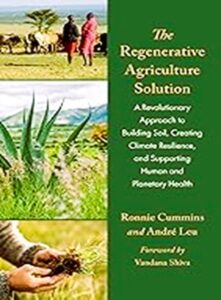 The second book: The Regenerative Agricultural Solution – A Revolutionary Approach to Building Soil, Creating Climate Resilience, and Supporting Human and Planetary Health by Ronnie Cummins and Andre Leu, 2014, ISBN 9781645022695
The second book: The Regenerative Agricultural Solution – A Revolutionary Approach to Building Soil, Creating Climate Resilience, and Supporting Human and Planetary Health by Ronnie Cummins and Andre Leu, 2014, ISBN 9781645022695
From the Amazon website: “Read this book to understand why you should care about regenerative agriculture. Until the public is better-informed and insists on sweeping changes to current agricultural policy . . . we will continue to degrade our planet and destabilize our climate. Leu and Cummins, through inspiring stories and solid science, show just how quickly we could turn that around.” ― Allan Savory, president, Savory Institute; chairman, Africa Centre for Holistic Management
Is it possible that the solution to the global climate emergency lies in a “waste” agricultural product?
The best-kept secret in today’s world is that solutions to some of our most pressing issues―food insecurity, deforestation, overgrazing, water scarcity, rural poverty, forced migration―lie in adopting, improving, and scaling up organic and regenerative agriculture best practices.
The Regenerative Agriculture Solution starts with the story of how two brothers―Jose and Gilberto Flores―are at the leading edge of this approach, pioneering the use of the previously discarded leaves of the prodigious agave plant to regenerate agricultural soils, reduce erosion, and improve water capture.
When Ronnie Cummins, the cofounder of Organic Consumer Association (OCA) and Regeneration International, met the Flores brothers in 2019 and witnessed their revolutionary agave agroforestry system, he knew they were onto something important.
Cummins had spent decades studying the potential and pitfalls of organic and regenerative agriculture and knew best practices when he saw them. He started to write a book about Flores’s brother and other visionary people, such as Dr Vandana Shiva, Allan Savory, and John Liu, who started landscape-scale regeneration projects. The scientific data was even more convincing, suggesting that these projects―and others like it―could revolutionize how we understand the climate catastrophe.
Sadly, Cummins passed away in April 2023, in the midst of working on the book. Not to leave this work unfinished, Ronnie’s widow and OCA cofounder, Rose, called on their friend, colleague, and collaborator, Regeneration International’s cofounder André Leu, to complete the work and place the Flores brothers’ breakthroughs in the broader context of regenerative agriculture solutions to the world’s many interlocking ecological crises.
The result is The Regenerative Agriculture Solution, a book that shows how regenerating our forests, rangelands, and farming ecosystems can cool our planet, restore the climate, and enrich our communities.
SPONSORSHIP
If you are interested in becoming a sponsor, please contact us at 936-273-1200 or send an e-mail to: lazygardenerandfriends@gmail.com
ABOUT US
BRENDA BEUST SMITH WE KNOW HER BEST AS THE LAZY GARDENER . . . but Brenda Beust Smith is also:
- a national award-winning writer & editor
- a nationally-published writer & photographer
- a national horticultural speaker
- a former Houston Chronicle reporter
When the Chronicle discontinued Brenda’s 45-year-old Lazy Gardener” print column — started in the early ’70s as a fun side-project to reporting, it then ranked as the longestrunning, continuously-published local newspaper column in the Greater Houston area. The name, she says, is not just fun, it’s true. Brenda’s gradual sideways step from reporter into gardening writing led first to an 18-year series of when-to-do-what Lazy Gardener Calendars, then to her Lazy Gardener’s Guide book which morphed into her Lazy Gardener’s Guide on CD, which she now emails free upon request. Brenda became a Harris County Master Gardener and, over the years, served on theboards of many Greater Houston area horticulture organizations. She hosted local radio and TV shows, most notably a 10+-year Lazy Gardener specialty shows on HoustonPBS (Ch. 8) and her call-in “EcoGardening” show on KPFT-FM. For over three decades, Brenda served as Assistant Production Manager of the GARDEN CLUB OF AMERICA’S “BULLETIN” magazine. Although still an active broad-based freelance writer, Brenda’s main focus now is THE LAZY GARDENER & FRIENDS HOUSTON GARDEN NEWSLETTER with John Ferguson and Pablo Hernandez of Nature’s Way Resources. A native of New Orleans and graduate of St. Agnes Academy and the University of Houston, Brenda lives in Humble, TX, and is married to the retired Aldine High School Coach Bill Smith. They have one son, Blake. Regarding this newsletter, Brenda is the lead writer, originator of it and the daily inspiration for it. We so appreciate the way she has made gardening such a fun way to celebrate life together for such a long time.
JOHN FERGUSON
John is a native Houstonian and has over 35 years of business experience. He owns Nature’s Way Resources, a composting company that specializes in high quality compost, mulch, and soil mixes. He holds a MS degree in Physics and Geology and is a licensed Soil Scientist in Texas.
John has won many awards in horticulture and environmental issues. For years he represented the composting industry on the Houston-Galveston Area Council for solid waste. His personal garden has been featured in several horticultural books and “Better Homes and Gardens” magazine. His business has been recognized in the Wall Street Journal for the quality and value of their products. He is a member of the Physics Honor Society and many other professional societies. John is the co-author of the book Organic Management for the Professional.
For this newsletter, John contributes articles regularly and is responsible for publishing it.
PABLO HERNANDEZ Pablo Hernandez is the special projects coordinator for Nature’s Way Resources. His realm of responsibilities include: serving as a webmaster, IT support, technical problem solving/troubleshooting, metrics management and quality control. Pablo helps this newsletter happen from a technical support standpoint.
Download the Newsletter with Our Events Calendar Below!
